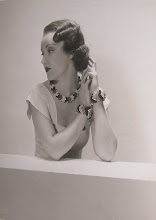Ann Dvorak (August 2, 1911 – December 10, 1979) was an American stage and film actress. Asked how to pronounce her adopted surname, she told The Literary Digest: "My fake name is properly pronounced vor'shack. The D remains silent. I have had quite a time with the name, having been called practically everything from Balzac to Bickelsrock. Anna McKim was born in New York City in 1911 to silent film actress Anna Lehr and actor/director Edwin McKim. While in New York, she attended St. Catherine's Convent. After moving to California, she attended Page School for Girls in Hollywood.[2] She made her film debut when she was 5 years old in the silent film version of Ramona (1916) and was credited "Baby Anna Lehr". She continued in children's roles in The Man Hater (1917) and Five Dollar Plate (1920) ,but then stopped acting in films. Her parents separated in 1916 and divorced in 1920, and she didn't see her father again until 13 years later when she made a public plea to the press to help her find him.
In the late 1920s, Dvorak worked as a dance instructor and gradually began to appear on film as a chorus girl. Her friend Karen Morley introduced her to Howard Hughes, who groomed her as a dramatic actress. She was a success in such pre-Code films as Scarface (1932) as Paul Muni's sister; in Three on a Match (1932) with Joan Blondell and Bette Davis as the doomed, unstable Vivian, in Love Is a Racket (1932) and in Sky Devils (1932) opposite Spencer Tracy. Known for her style and elegance, she was a popular leading lady for Warner Brothers during the 1930s, and appeared in numerous contemporary romances and melodramas. At age 19, Dvorak eloped with Leslie Fenton, her English co-star from The Strange Love of Molly Louvain (1932), and they married March 17, 1932. They left for a year-long honeymoon without giving adequate notice to the studio and in spite of her contractual obligations. This led to a period of litigation and pay dispute during which she discovered she was making the same amount of money as the boy who played her son in Three on a Match. She completed her contract on permanent suspension and then worked as a freelancer, but although she worked regularly, the quality of her scripts declined sharply. She appeared as secretary Della Street to Donald Woods' Perry Mason in The Case of the Stuttering Bishop (1937). She also acted on Broadway. With her then-husband, Leslie Fenton, Dvorak traveled to England where she supported the war effort by working as an ambulance driver, and appeared in several British films. She appeared as a saloon singer in Abilene Town, released in 1946. The following year she showed she could handle comedy well by giving an assured performance in Out of the Blue (1947). Dvorak's marriage to Fenton ended in divorce in 1946. In 1947, she married her second husband, Igor Dega, a Russian dancer who danced with her briefly in The Bachelor's Daughters. The marriage ended in divorce two years later. Dvorak retired from the screen in 1951, when she married her third and last husband, Nicholas Wade, to whom she remained married until his death in 1975. She had no children. In 1959, she and her husband moved to Hawaii, a place she had always loved. On December 10, 1979, Dvorak died of stomach cancer in Honolulu at the age of 68.She was cremated and her ashes scattered off Waikiki Beach. Dvorak has a star on the Hollywood Walk of Fame at 6321 Hollywood Boulevard for her contribution to motion pictures. It was dedicated February 8, 1960



















0 comments:
Post a Comment